The Inside Story of Sing Sing’s Rehabilitation Through the Arts Program

One day in 1996, Katherine Vockins, an international market expert, followed her husband, Hans Hullundbaek, to New York’s Sing Sing Correctional Facility, where he had been teaching a college-degree program to incarcerated men. Watching him work, she was inspired by what she describes as “an experience that blew away the myths and stereotypes so many of us believe about the incarcerated.” So when a small group of men expressed an interest in putting on a play at the prison, she quickly agreed to help them. By the following year, they had successfully written and staged the original work Reality In Motion, featuring a cast of mostly first-time actors that included notable names like novelist John “Divine G” Whitfield and professional boxer Dewey Bozella.
That production marked the beginning of Rehabilitation Through the Arts (formerly, The Theater Workshop), a nonprofit program that is now active in eight prisons across the state of New York—both men’s and women’s, maximum and medium security. Operating under the principle that theater can be a channel for self-development, RTA works to “help people in prison develop critical life skills through the arts, [by] modeling an approach to the justice system based on human dignity rather than punishment,” according to their mission statement.
Almost three decades since it was founded, RTA is now gaining mainstream attention thanks to Sing Sing, Greg Kwedar’s new A24 film starring Oscar nominees Colman Domingo and Paul Raci, who act alongside a host of formerly incarcerated alumni of the program. Based on a true story about the creation of time-traveling comedic play Breakin’ the Mummy’s Code, the heartfelt new drama is a touching testament to RTA’s vital work and the life-changing difference the program continues to make in the lives of incarcerated individuals everyday.
Just ask Clarence “Divine Eye” Maclin, an RTA alumnus and one of the stars of Sing Sing. Speaking with ELLE.com, Maclin admits that, prior to getting involved with the program, he was “into a much different life”—and not in a positive way. Everything changed, though, after he stumbled upon an RTA staging of One Flew Over the Cuckoo’s Nest. “I was seeing brothers up on stage that I would normally see in the yard or in the mess hall, and the way they were performing was totally contradictory to how I saw them [before],” he says. “It was intriguing how they were pulling this off, and it seemed like they were enjoying it. So I wanted to capture that feeling.”
At the time, Sing Sing’s RTA program was under the tutelage of Brent Buell, a theater director and the real-life playwright behind Mummy’s Code. A co-writer on Sing Sing, Buell volunteered with RTA for over a decade and looks upon those days fondly. “I wanted to be there all the time,” he says. “I loved seeing these guys come in who had reputations throughout the prison, who were people that people feared. And then, here they are, six months later, doing a production where they’re dancing on stage.” Buell says that transformation was important. “We didn’t choose the ‘nice guys’ of Sing Sing. These weren’t the guys that all said, ‘Yes, sir’ and bowed to the [correctional officers]. We liked the people that really needed to be in the program.”
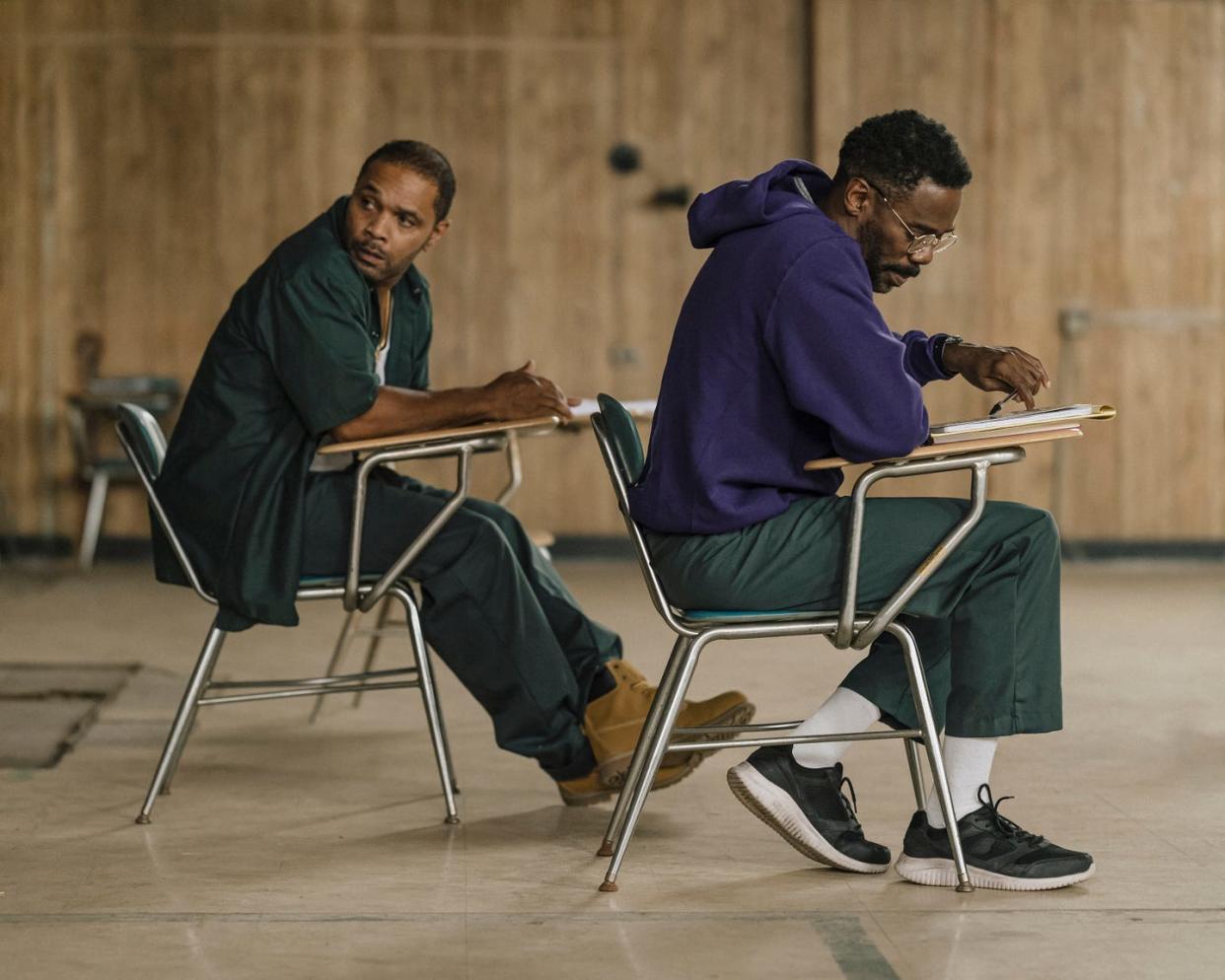
And though certain aspects were spearheaded by volunteers like Buell, he maintains that, ultimately, “This program is really driven by incarcerated people themselves”—and that’s what separates RTA from other prison-based improvement programs. “As a director, I would come in with the abilities that I had,” he adds. “But it was the prisoners who had the run of the program, who were doing all the scheduling, who decided who came into the program and who didn’t. It’s so important, because it’s that empowerment [that gave them purpose].”
Each RTA chapter mounts around two productions a year. Buell claims that his students took the process seriously; in the weeks leading up to a new premiere, members would often spend full days rehearsing. Sometimes, they’d even obtain “out-counts,” granting them permission to stay in the theater from morning until night without having to return to their cells for routine check-ins.
Of course, RTA isn’t just about the productions themselves. This is a rehabilitation program, first and foremost, and though Buell insists that it “is not just ‘drama therapy,’” much of the work done outside typical rehearsal periods could appropriately qualify as being “therapeutic.” (Sing Sing features a moving scene where the members are asked to close their eyes and return to a time when they felt most at peace, for example.) Maclin refers to these non-primetime meetings as “workshops” and acknowledges them as when “bonds were really created.” The exercises they engaged in helped to instill trust amongst the members—something that translated on stage (“if I drop my line, I know that you got me”) and off. “It was the safe space that was created that allowed everyone to be themselves,” Maclin explains. “Whatever mask you brought in here, it slowly comes down. You can’t keep your mask up and do this work at the same time.”

Buell gives an example, recalling his very first workshop when, during an improv exercise, he instructed his students to become an inanimate object. Many of the members had no idea how to proceed, so Buell told one of them to become a tomato. “Here, in front of these guys who you’re supposed to be hard-faced with, this six-foot-five man dropped to the floor in a little ball, and then up comes his arm [to form] this little leaf at the top of the stem,” he remembers. “Everybody cracked up. It was like he gave everybody permission to be part of this, to laugh and be free.”
Maclin can’t help but agree. The actor cites RTA for helping him reconnect with his inner-child. During his youth, he liked to draw and paint, but found himself suppressing those urges as he got older “because it wasn’t what the cool kids were doing, it wasn’t looked upon as being a tough thing.” Working with RTA, however, allowed him to let those guards down.
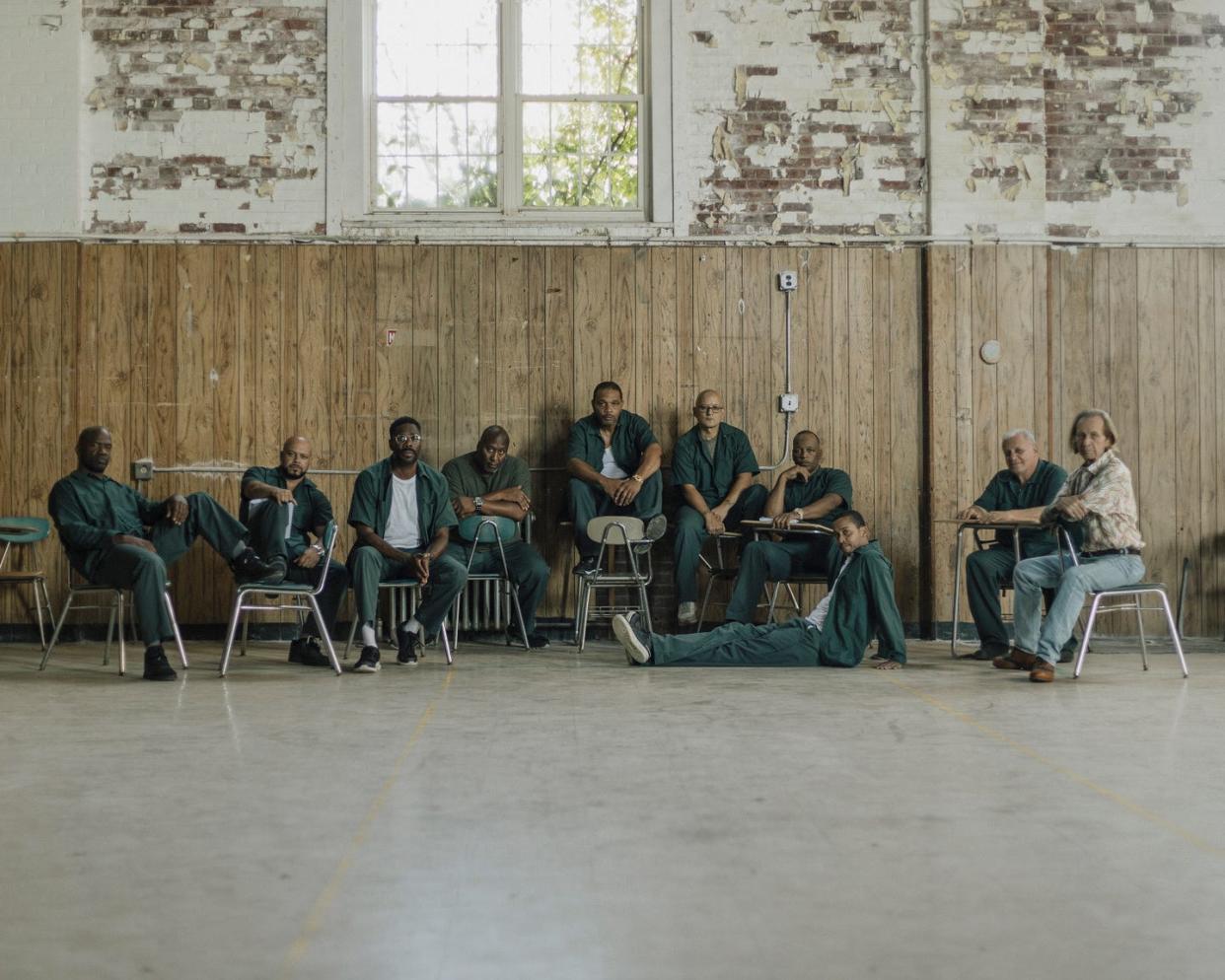
The reasons for this are manifold, but Buell believes that much of it has to do with the very nature of acting and, more specifically, what it means to truly look through someone else’s eyes. The playwright remarks that many of his students, upon first joining the program, were initially resistant to the common acting exercise of imagining how a character might feel about a particular situation; in a prison context, thinking about someone else’s feelings was a sign of weakness. “But once a person does start seeing through that character’s eyes, it’s like a revelation,” he says. “I distinctly remember seeing men who had started [off] reluctant now starting to say to people, ‘Well, how do you feel? How do you see this?’ It’s the beginning of empathy. It’s so beautiful.”
And members weren’t the only ones who felt that. Buell and Maclin both watched as RTA’s profile rose within the prison, eventually becoming such a hot commodity that there was a waiting list to even be considered for membership. (According to Maclin, who now works as a consultant for the program, the wait is currently about two years for the Sing Sing chapter.) “When you’ve got that much positivity up on stage, with dudes that have leader-like qualities and leader-like abilities all together doing creative things, there’s an attraction and a magnetism,” Maclin explains. “People want to be a part of that. People want to be viewed as that.”
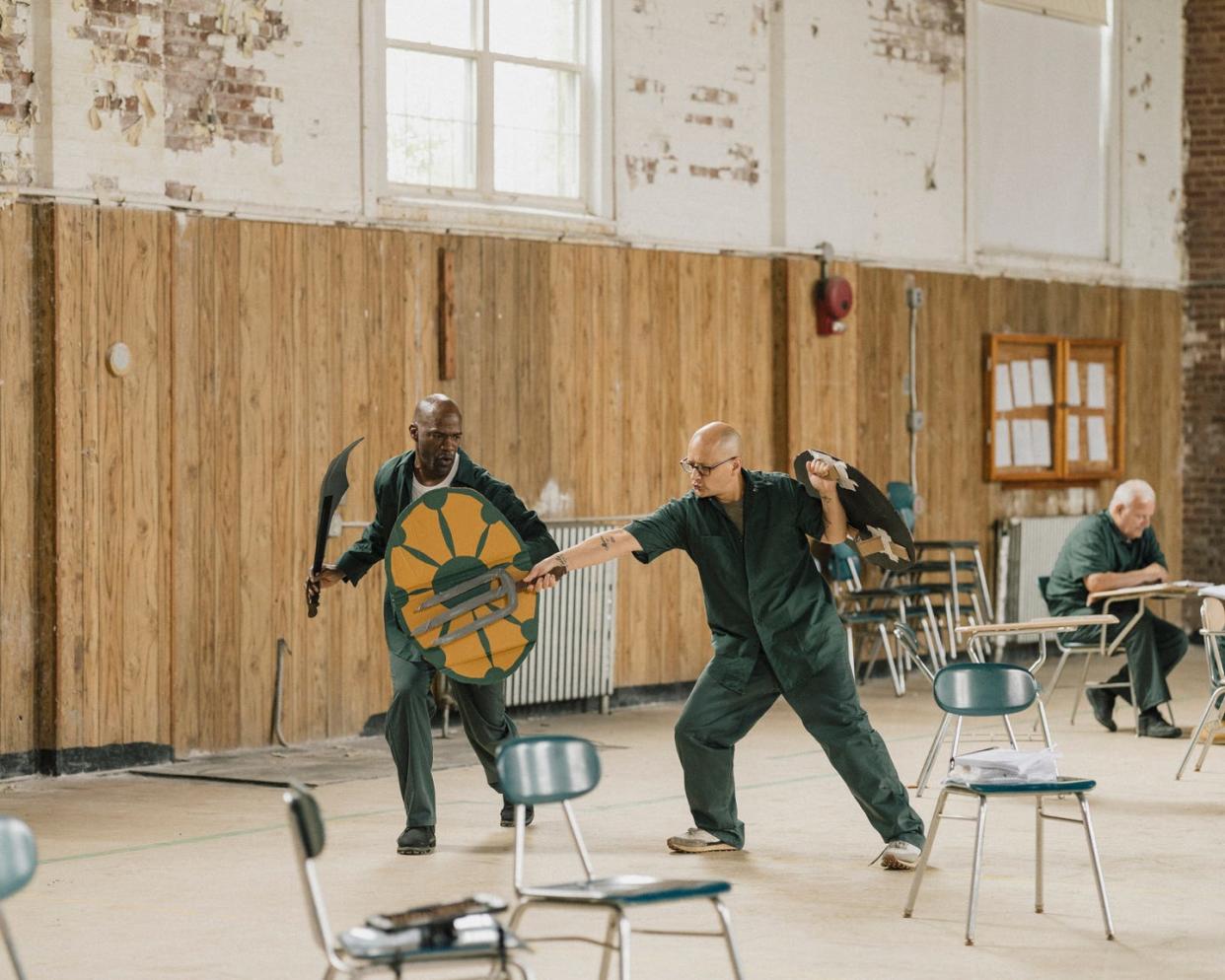
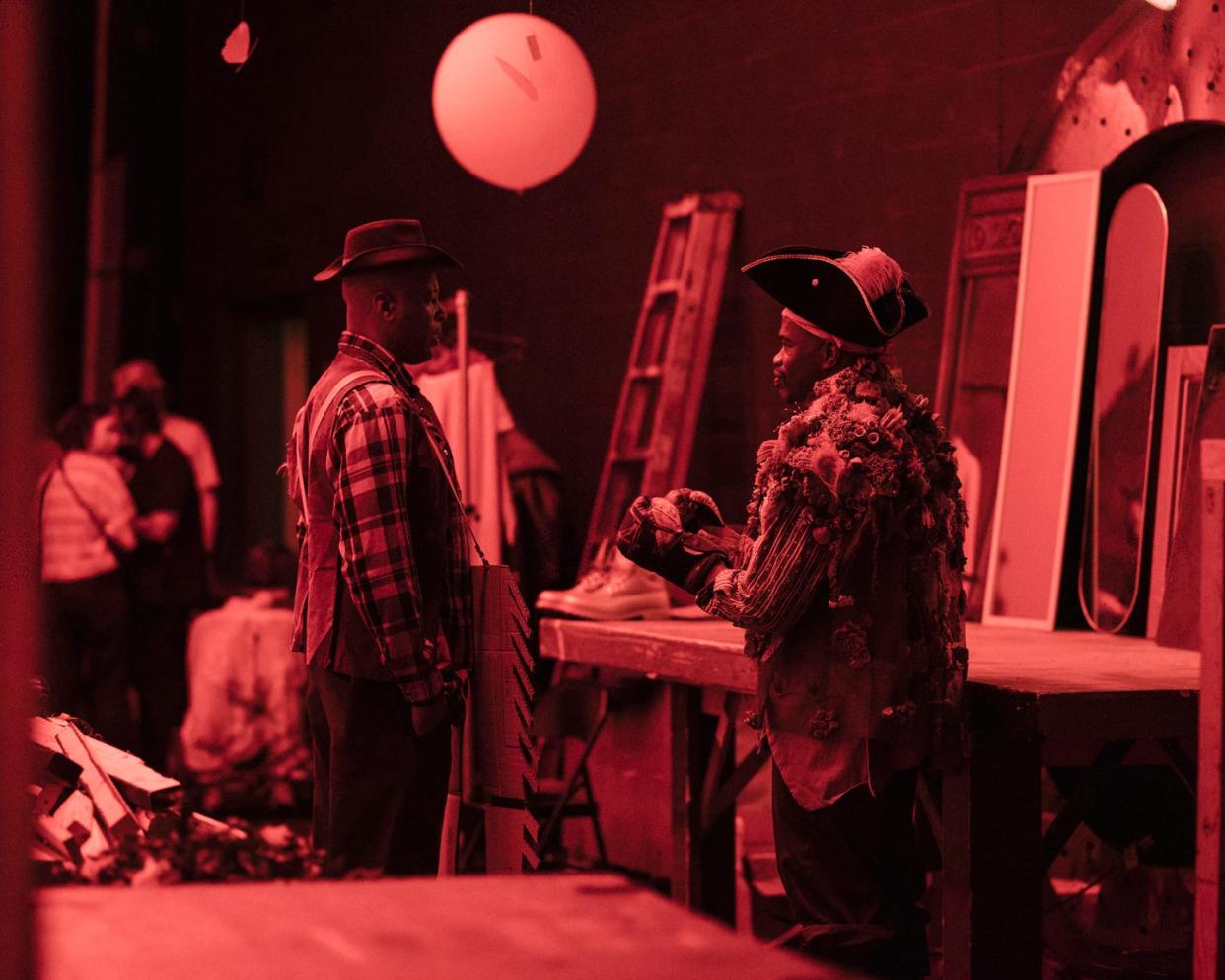
But to be a part of it, there are steps one has to take. Maclin remembers being put on a one-year probation before he was officially granted membership, a period during which he had to be on his best behavior. “It was very difficult for me because I was always in trouble, always in some shit,” he lets off. “But I did it. I took a year off, didn’t get any tickets or any infractions, and then I got into the program—and it changed my life. So it was worth it.”
And because people throughout the prison are aware of these stipulations, too, those not yet involved with the program are similarly motivated to act in accordance; RTA’s “rehabilitation” efforts extend far beyond the auditorium where meetings are commonly held. “There was just this process in which one must clean himself up to get into this,” Maclin adds.
It’s for all these reasons that Buell and Maclin agree that RTA—or programs like it—should be instituted in prisons and other correctional facilities nationwide. Buell notes that it wouldn’t be hard: it’s not an expensive program to launch and doesn’t require any drastic rebuilding of existing prison infrastructure. In fact, given the sky-high annual costs of keeping someone in prison—in New York, it ranges from $80,000 to six figures per person—it stands that financing programs designed to actually help them would be cheaper in both the short-term and long-run. Consider this alongside the genuinely impressive statistic that, compared to the approximately 65 percent of formerly incarcerated people who return to jail within their first three years after release, only 3 percent of RTA alumni do the same. “For this very modest expenditure, they could have a program that actually changes people so they don’t come back,” Buell stresses.
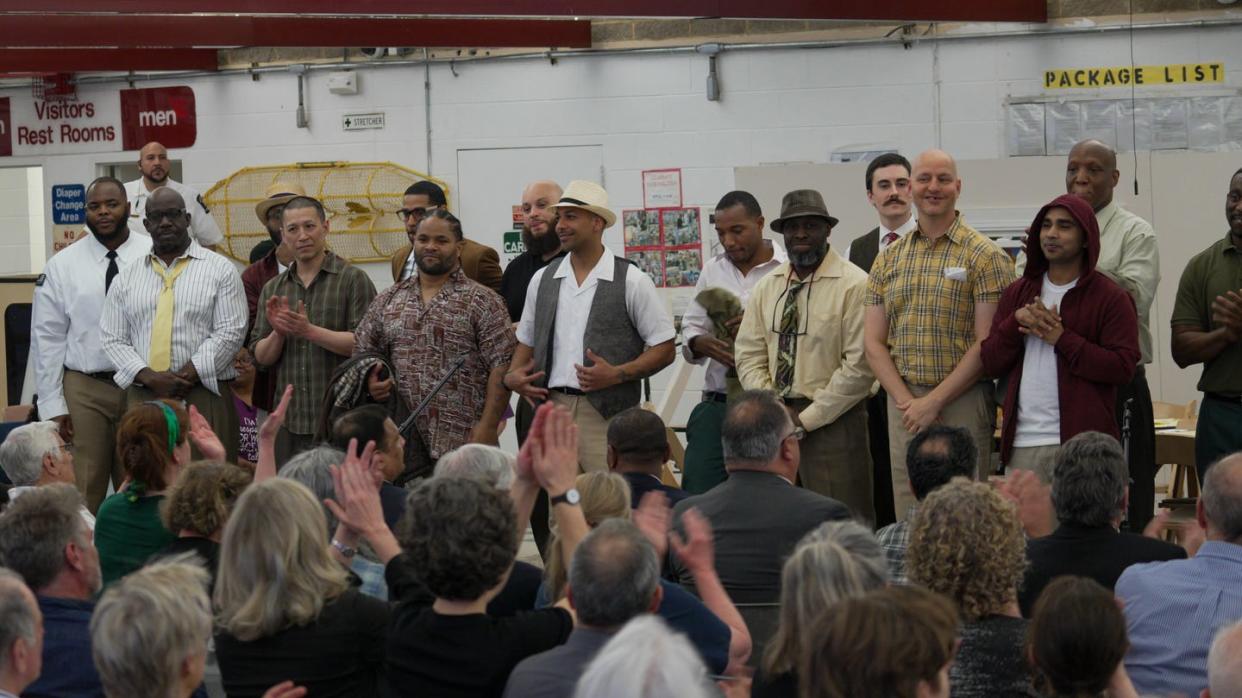
Maybe Sing Sing will inspire the powers that be. Just several weeks after its limited release—before it’s even finished expanding to theaters nationwide—Kwedar’s film is already awash in Oscar buzz, particularly for Maclin, who pundits have rightfully pegged as a shoo-in for Best Supporting Actor. Still, Maclin insists that he didn’t do this project for fame. In fact, he didn’t even join RTA intending to become an actor. “I’m trying to change the way people view people that were incarcerated,” he says near the end of our conversation. “The people behind the wall are human beings. They’re people, and every person can change. So if you’ve got the capacity to pour some humanity, some hope, some empathy, some integrity into somebody, you may get a different individual than if you just hold all these things to yourself and deny them. We still have the ability to create, to contribute, and to become a part of the greater society in a positive way.”
Sing Sing is playing in select theaters now and expands nationwide on August 23.
Find out more about Rehabilitation Through the Arts here.
You Might Also Like






